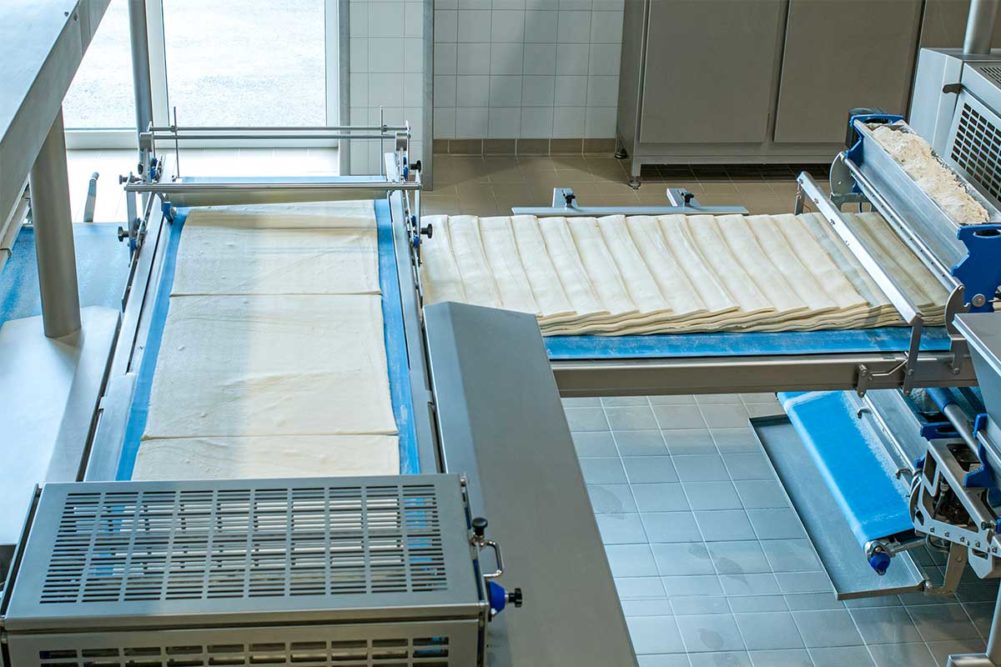With surging inflation and the rising cost of ingredients, bakeries now have extra incentives to reduce waste while positioning their companies as eco-friendly in the long run.
Hans Besems, executive product manager, AMF Tromp, an AMF Bakery Systems brand, noted that today’s flour dispensers strew less flour and offer better controls while hygienic design and tool-free cleaning require less water and time for sanitation.
Scrap, also known as rework, is often a byproduct of sheeting lines and can be troublesome when too much is produced such as during the production of some pizzas and other circular products. That’s why there has been a focus on reclaiming as much as possible.
“Scrap reduction systems are standard on our lines,” he said. “All scrap dough can be reclaimed and reworked in new doughs via our mixers. Our newest dough centering technology makes sure the dough sheet is always centered, so to minimize the amount of side trim or scrap that occurs and provide savings.”
In most cases, this reworked dough becomes part of the formula and, in fact, can positively impact the product, noted Nick Magistrelli, vice president of sales, Rademaker USA. Still, there is often a limit as to how much scrap makes it back into the mixer. That’s why bakeries need to focus on minimizing it in the first place.
“There have been many advancements with regards to rework handling, for example, specialized weigh solutions to guarantee accurate volume and delivery back to the beginning of the line or the mixer area,” he said.
John Giacoio, vice president of sales, Rheon USA, pointed out that scrap is generated by two major factors: an uneven or too wide of a dough sheet.
“If your dough sheet is uneven or wavy along the edges, this is a clear sign that the dough sheet is stressed,” he observed. “The ’snap back’ effect gives you the uneven edges that need to be cut off to give you a consistent sheet.”
Mr. Giacoio said Rheon offers a system that generates a stress-free sheet at the divider and through reduction stations.
“Many products require different dough sheet widths, so a line needs to be able to adjust the dough sheet width as needed and minimize side scrap,” he said.
Meanwhile, the Koenig Twin Sat rolling mill system of the Menes line creates less dough stress from the outset, resulting in a smaller edge trim.
“This edge trim can be fed back into the production process, according to customer specifications,” said Wolfgang Staufer, chief executive officer, Koenig.
He added the Koenig dough belt machine Artisan SFM generally works without trim or scrap.
In laminated doughs, precise application of butter and other fats can also lower ingredient costs. Alexander Weissbach, head of technology, product management and the Dough-how Center at Rondo, said a control system for the fat pump will minimize variations in the fat band.
“This helps to reduce giveaways for the most expensive raw material in laminated dough,” he said. “Using a folding system to adjust the dough band width and to control the final dough band width right from the beginning will also reduce side trimmings.”
Digital controls and other features can streamline a production line to reduce waste from the moment production begins.
Randy Kelly, applications specialist for Fritsch, a Multivac Group Company, suggested the automatic startup control of components means flour dusters or cross rollers are only switched on when they are currently being used in the production process.
In addition to reducing waste, software controls lower downtime, streamline changeovers and allow for online training of new operators.





